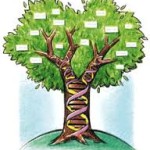“Facebook Instant Articles Just Don’t Add Up for Publishers” By Michael Wolff
From MIT Tech Review:
“(…) digital content is being divided between a lucrative high-end entertainment world, where licensors receive a negotiated fee for allowing the distribution of their property, and a low-end publishing world where content is expected to be “free,” supporting itself on often elusive advertising sales and ad splits. In this particular deal, publishers can sell ads on their articles and keep all of the revenue, or have Facebook sell ads in exchange for 30 percent.
(…) The more immediate question is about whether Facebook’s “instant articles” and other republishing initiatives are digging a deeper hole for publishers or helping them get out of the one they are already in.
(…)
When the Facebook “instant articles” deal was first proposed last fall, there was no provision at all for a financial exchange. From Facebook’s point of view, it was just a further service to users and publishers. If it hosted the Times’ content it would load faster—hence a better experience for Facebook users clicking to a shared Times story. The Times and other publishers should do this, Facebook reckoned, because it would get them greater exposure to Facebook’s vast audience. It was promotional.
After some limited pushback from the publishers, the deal now resembles a conventional digital ad split—of the kind made ubiquitous by Google AdSense. That is, if Facebook sells against this content through its networks, it splits the revenues with the publisher. If the publisher sells the ad, as though in a free-standing insert model, it keeps what it kills. (Exactly the model that has consistently lowered digital ad prices—the inevitable discounting when you have many sellers of the same space.)
(…)
But what of the New York Times? (…) This is further puzzling because the Times has built a digital subscription business of almost a million users. Why subscribe to the Times if you can read it for free on Facebook?
Of course, the subscription business will not support the Times alone (indeed, its growth appears to be seriously slowing)—it needs advertising too. Most of the advertising that pays for most of the Times’ costs still comes from the actual newspaper. That revenue stream is declining quickly, however, and is far from being replaced by digital ads, which in the first quarter of 2015 yielded only $14 million a month in revenue (15 years ago, before digital balkanized the business, the Times was averaging more than $100 million a month in ad revenue).
These measly ad dollars are in part a function of the fact that Google and Facebook together take 52 percent of all digital advertising. (…)
And now, in the prevalent view, there is simply no turning back. The math has changed. The New York Times may once have made more than $100 million a month in advertising revenue on a 1.5 million circulation base; now it makes $14 million on 50 million monthly visitors on the digital side of the business. So it will need something like 350 million users to make equivalent money—which, bizarrely, Facebook might possibly provide. Except, of course, that the more numbers go up, in digital math, the more their value goes down. But pay no attention.” read full article
“Human Curation Is Back” by Jean-Louis Gassée
article featured in Monday Note:
“(…) The limitations of algorithmic curation of news and culture has prompted a return to the use of actual humans to select, edit, and explain. Who knows, this might spread to another less traditional media: apps.
(…) Another type of curator, one whose role as trustee is even more crucial, is a newspaper’s editor-in-chief. (…)
With search engines, we see a different kind of curator: algorithms. Indefatigable, capable of sifting through literally unimaginable amounts of data, algorithms have been proffered as an inexpensive, comprehensive, and impartial way to curate news, music, video — essentially everything.
The inexpensive part has proved to be accurate; comprehensive and impartial less so. (…)
Certainly, algorithms can be built to perform specialized feats of intelligence such as beating a world-class chess player or winning at Jeopardy. (…) But ask a computer scientist for the meaning of meaning, for an algorithm that can extract the meaning of a sentence and you will either elicit a blank look, or an obfuscating discourse that, in fact, boils down to a set of rules, of heuristics, that yield an acceptable approximation. (…) ”
“Do Smarter People Drink More? What 5 Studies Say” by Jordan Rosenfeld
Good piece compiled recent sutides on the matter:
1. SMART WOMEN DRINK MORE, BUT NOT MORE THAN MEN OVERALL.
2. SMART KIDS GROW UP TO IMBIBE MORE.
3. HIGHER EDUCATION = HIGHER ALCOHOL INTAKE AS YOU AGE.
4. DUMB MEN DRINK MORE, BUT TOTAL ABSTINENCE IS LINKED TO LOWER IQ.
“Conspiracists Concur: Climate Change Is a Colossal Cover-Up” by Richard Martin
Article from MIT Tech Review covering a patchwork of articles on the theme.
“(…) That climate deniers are also conspiracy buffs might seem like one of those dog-bites-man findings for which social scientists are often ridiculed (“People in love do foolish things, study concludes”). But the background to this study is actually more interesting than its conclusion.
Published in the Journal of Social and Political Psychology, the new paper, “Recurrent Fury: Conspiratorial Discourse in the Blogosphere,” is based on an examination of blog comments in response to the authors’ previous paper, “Recursive Fury: Conspiracist Ideation in the Blogosphere”—itself a follow-up to their original study, “NASA Faked the Moon Landing—Therefore, (Climate) Science Is a Hoax: An Anatomy of the Motivated Rejection of Science,” published in Psychological Science in 2012. In other words, commenters responding (mostly angrily) to two studies of conspiratorial thought have accused the authors of being part of a massive conspiracy.
(…)
The British newspaper The Telegraph has helpfully compiled a list of the most widely cited climate-change theories (…) a plot against the United States, a plot against Asia, and a plot against Africa. A vast right-wing conspiracy, or a dark plot from the left.(…) climate change was dreamed up by Margaret Thatcher as part of her campaign to break the U.K. coal unions.
(…) “Science literacy promoted polarization on climate, not consensus,” writes Achenbach from National Geographic. (…) A well-designed experiment is no match for a Weltanschauung. This is most clearly understood by Thomas Pynchon, the greatest modern novelist of paranoia. “There is something comforting—religious, if you want—about paranoia,” Pynchon wrote in Gravity’s Rainbow. The alternative is “anti-paranoia, where nothing is connected to anything, a condition not many of us can bear for long.” read full article
“Ancestry Moves Further into Consumer Genetics” by Anna Nowogrodzki
article featured in MIT Tech covering new service by Ancestry.
“Ancestry entered the field of consumer DNA analysis in 2012 with the launch of AncestryDNA, a $99 spit test that will analyze your DNA – five years after 23andMe began to offer similar DNA-testing kits.
… Ancestry has an advantage over 23andMe in that it already has millions of users’ family trees. AncestryHealth capitalizes on this: the free service will import both family tree data from Ancestry and genetic data…
…family history is often the first thing doctors ask for to assess health risks, and AncestryHealth is betting that people would rather print out that history from a free website than dredge their memories for half-forgotten details in the five minutes before their doctor’s appointment.
And Ancestry is hoping to sell that data for medical research purposes. …
…“With the blessing of the FDA and regulators, we would like to communicate with that consumer, whether that is through a physician or a genetic counselor,” says Chahine.” read full article
It seems we can’t find what you’re looking for. Perhaps searching can help.



